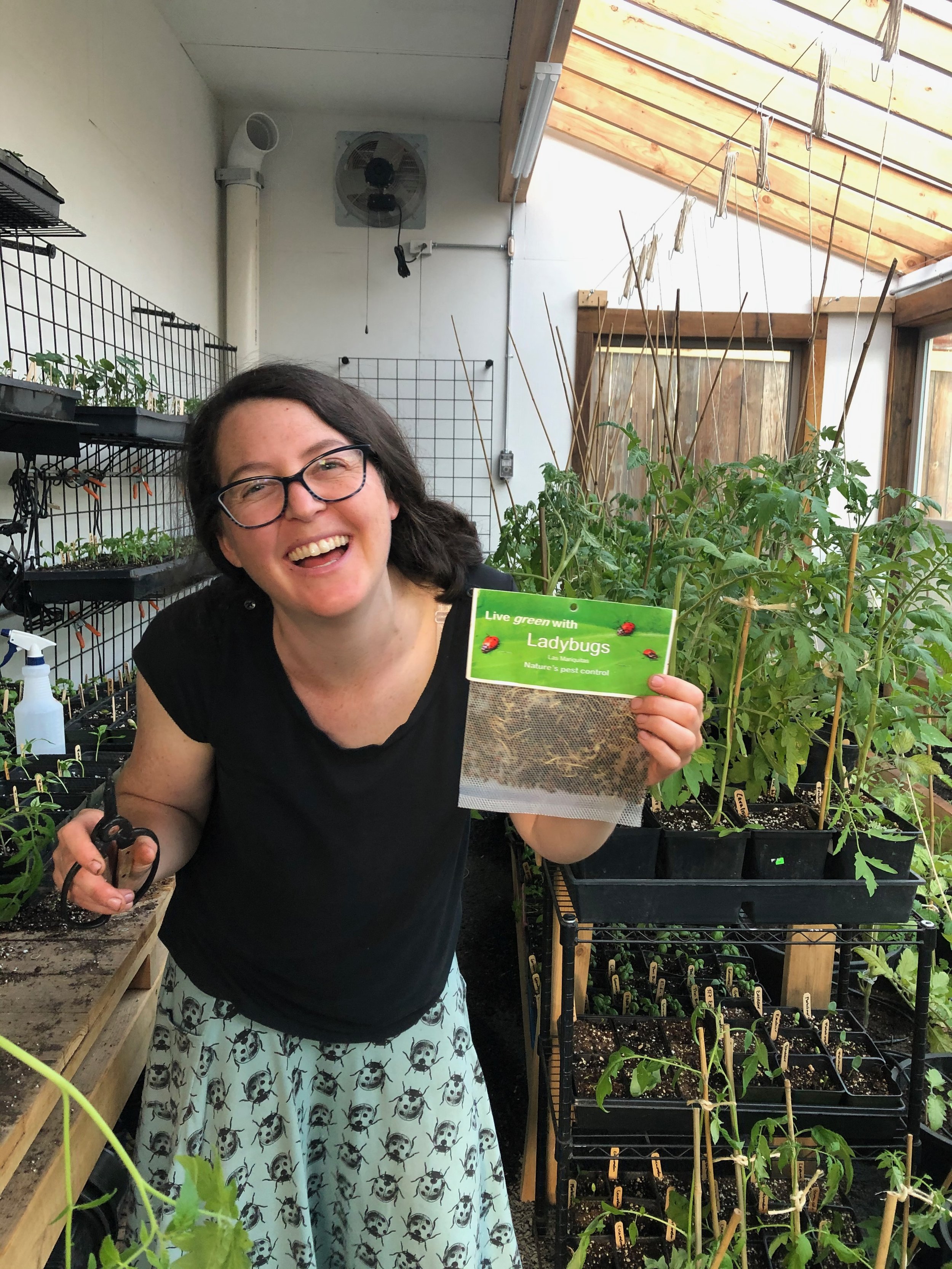What should I do about aphids in my garden?
Photos from left to right: #1 Ladybug larva feasts on aphids on the underside of a sunflower leaf. #2 Gray aphids on the tender new growth of a leaf broccoli plant. #3 Aphid infestation on a the leaves of a savoy cabbage plant.
Aphids are small green, gray, black, white, red, pink or brown pests suck the sap out of plants!
While it can be uncomfortable for us humans to wait for natural predators to show up and clear up aphid infestations on the plants that we’ve invested resources into in hopes of getting a meaningful harvest, or enjoying their aesthetic beauty, when you discover aphids on perennials, in particular, we encourage you to wait just a little bit longer than feels comfortable for you to see if nature can resolve the issue without you putting in any effort at all!
When it comes to annual vegetable gardens in Central Oregon, aphids are super common as fall approaches, particularly on Brassica family (kale, kohlrabi, cabbage, broccoli) plants. Without human intervention, aphids can definitely greatly impact plant health and our chances of a meaningful harvest from our crops.
Where to look for them: Look for clumps of aphids on the tops and undersides of leaves, stems, and tender new growth of plants. Look for curled, discolored, and/or distorted leaves and if it’s a pretty intense infestation, there may be glossy, sticky “honeydew” on leaves. If you see aphid “mummies”(aphids with holes in them), aphidius wasps, natural predators, are helping you out!
Interventions: If you aren’t noticing that ladybugs, green lacewings, aphidius wasps, or other natural predators are keeping your aphid populations under control, consider intervening:
Squish aphids with your fingers.
For plants that can tolerate a jet stream of water, spray them to knock off the aphids.
Cut back aphid infested/damaged parts of your plants (if not on emerging leaves and if you aren’t observing predators eating them) and feed them to your chickens (as long as the plant material is safe for them to eat!) or put in a (hot) compost pile.
Spray with biodegradable soap (like Dr. Bronner's) and water mixture: 1 Tablespoon per quart of water (and then squish).
If aphids persist after exhausting these strategies, we typically opt to pull plants completely and replant by direct sowing or transplanting healthy, seasonally appropriate plants.
If you’re determined to keep intervening, though, you could try:
Releasing ladybugs, or even better for our native ladybug population, releasing green lacewings. Just know that there’s no guarantee they’ll stay where you want them to in your garden, even if you have an abidance of aphids!
Spray neem oil in the morning or evening, following package Instructions.
Dust susceptible plants with Diatomaceous Earth (pulverized fossilized ancient diatom creatures). Just know that other soft bodied creatures can also be harmed if they come into contact with it.
Confused or overwhelmed? Schedule an on-site consultation with us or a series of garden lessons to get help! We can guide you in getting set up with prevention strategies and troubleshooting pest issues as they arise.






